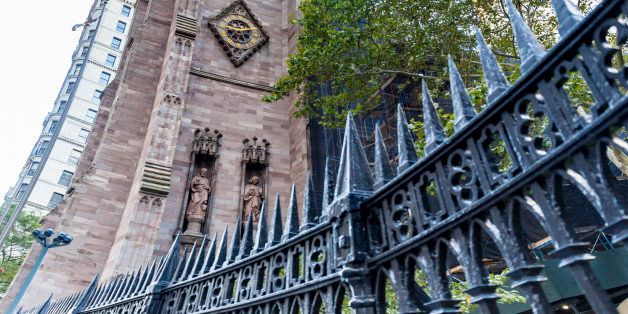
Trinity Parish and the Trinity Episcopal Church on Broadway and Wall Street in New York City organize an annual theological conference called "Listen for a Change." The conference is intended to prepare "clergy and laypersons for imaginative and catalytic leadership." This January the theme was racial justice.
The Trinity conference focused on racial justice partly because of racism imbedded in the U.S. penal system and also because of the different responses by Blacks and Whites to events like the police shooting of an unarmed Black teenager in Ferguson, Missouri in 2104. According to the conference call, "Current studies report that racial discrimination in the U.S. penal system is rampant, and legalized silence perpetuates the problem. Seventy-two percent (72 percent) of people in state prison for drug conviction are people of color, although blacks and whites buy and use drugs at roughly the same rates. In New York State, 94 percent of those imprisoned for a drug offense are people of color. A Pew study found that, in the wake of the police shooting of an unarmed black teen in Ferguson, MO, 80 percent of blacks said that "this case raises important issues about race," but only 44 percent of whites agreed, and 47 percent of whites said 'race is getting more attention than it deserves.'"
The conference examined racial injustice in both the past and present. Organizers argued that "many systems of discrimination thrive because they remain invisible to those benefitting from them" and believe that "As children of God, we are called to wake up, and to listen up." They cited a charge by Supreme Court Justice Sonia Sotomayor that "The way to stop discrimination on the basis of race is to speak openly and candidly on the subject of race."
Along with author Ann Farrow and historian Cynthia Copeland, I participated in a fifteen-minute video history of slavery in New York City including the involvement of Trinity Church and its parishioners. Trinity Church was at the center of the New York colony's ruling class with close ties to the wealthy merchants, slaveholders, and government officials. Prominent New Yorkers assigned enslaved Africans to construct the original church building.
"To consult of ye most Easy Methods in Carrying on the building of a church for the Protestants of ye Church of England. Mr. Meyer, Mr. Emmet, Captain Toddle and Captain Wilson have each of them leant a Negro to work on Wednesday next for ye opening the ground for the foundation and that ye twelve managers of the church building do each find a Negro or laborer to be employed on the said building for fourteen days and each member present send a Negro."
-Trinity Church meeting minutes, 1696 and 1697
The history of Trinity Church's lay leadership's involvement with slavery was mixed. Trinity vestryman Daniel Horsmanden was Chief Justice of the Supreme Court of the province of New York in the 1740s. In 1741, he was on the bench during the trials of over 100 enslaved Africans accused to plotting a slave rebellion. Horsmanden sentenced over thirty people, mostly Black, to death for the crime of desiring freedom and for actions that never took place. They were either hanged or burned alive at what is now Foley Square." After the American Revolution, however, Trinity Church vestryman John Jay and pew-holder Alexander Hamilton were active in the movement for gradual emancipation they helped establish an African Free School on land provided by Trinity.
In the video, The Reverend Dr. William Lupfer, Rector of Trinity Church Wall Street acknowledged, "It is important for us to be honest about our past. We were comfortable making a distinction between pastoral care and social advocacy. And so we cared for people who were slaves, pastorally, but we didn't do the tough work of social advocacy to abolish slavery."
Professor Copeland explained, "It is important for those institutions - those systemic institutions that have played a role - to examine themselves and to be able to come to terms with what has happened. There has been a very dominant narrative out there that we've all had to buy hook, line and sinker. And now that there is an alternative and there are many perspectives on that history and African Americans specifically, they are demanding to have a place in the history and in the narrative."
Lupfer summarized the purpose of the video and the goal of the conference. "I think we at Trinity need to acknowledge that Trinity was involved in slavery, that we were involved deeply in that brokenness, that we benefitted from that brokenness and that we have work to do now and in the future to help heal that brokenness. There are no excuses. We acknowledge what we have done. We are honest about it. We are learning from it and I hope it will bring us into a more vigorous and hopeful future."
Discussions at conference and the history "The Shadow of Slavery" are both available for viewing online.
